Timeline of bioethics
This is a timeline of bioethics, attempting to describe significant events related to the development of the field. Its subfield medical ethics is described with more detail on the Timeline of medical ethics.
Sample questions
The following are some interesting questions that can be answered by reading this timeline:
- What are some of the multiple topics closely related to the field of bioethics?
- Sort the full timeline by "Main topic".
- You will see a variety of topics of interest, such as biological agents, biopolitics, religion (Catholic, Budhist, and Jewish bioethics), cloning, environmental ethics, healthcare, human genetics, etc.; all topics often directly linked to the field of bioethics.
- What are some notable events describing the development of the concept of bioethics?
- Sort the full timeline by "Event type" and look for the group of rows with value "Concept development".
- You will see events related to the development of the term "bioethics" as well as several other associated terms, such as "biopolitics" and "speciesism", etc.
- What are some notable publications on the topic of bioethics?
- For books, sort the full timeline by "Event type" and look for the group of rows with value "Literature (book)".
- You will see some very early publications by authors such as Thomas Aquinas, as well as modern classics in the field, such as Animal Liberation, and other notable publications.
- For academic journals, sort the full timeline by "Event type" and look for the group of rows with value "Literature (journal)".
- What are some events describing notable controversial cases pertaining to the field of bioethics?
- Sort the full timeline by "Event type" and look for the group of rows with value "Notable case"
- You will see a variety of cases of interest mainly occurring within the scope of controversial scientific fields, as well as some cases involving biological agents.
- What are some events describing criticism on the field of bioethics?
- Sort the full timeline by "Event type" and look for the group of rows with value "Criticism".
- You will see comments by some notable authors, including Steven Pinker and Bryan Caplan.
- What are some notable organizations devoted to the topic of bioethics?
- Sort the full timeline by "Event type" and look for the group of rows with value "Organization".
- You will mostly see a number of English speaking organizations esablished whether by educational institutions or national governments.
- What are some notable policies issued by governments on issues pertaining to the field of bioethics?
- Sort the full timeline by "Event type" and look for the group of rows with value "Policy".
- You will see a number of regulations introduced by governments and major organizations, many related to controversial cases in scientific research, and concerning the field of bioethics.
- What are some notable treaties concerning bioethics?
- Sort the full timeline by "Event type" and look for the group of rows with value "Treaty".
- You will see important treaties signed by UNESCO, concerning bioethics.
- Other events are described under the following types: "Activism", "Genetic discrimination", "Genetic privacy", and "Notable comment".
Big picture
| Time period | Development summary |
|---|---|
| <1960s | Discussions of moral issues in medicine already happen in ancient times, with early contributions by Hippocrates and Plato.[1] In the 20th century, German theologian Fritz Jahr publishes three articles in 1927, 1928, and 1934 using the German term “Bio-Ethik”, forcefully arguing an ethical approach to issues concerning human beings and the environment.[2] |
| 1960s | Bioethics as a distinct field of academic study is born in the United States, merging from a cluster of scientific and cultural developments in the country during that decade.[3] A wide range of new ethical problems emerge into view, all of them driven by spectacular advances in medicine and biology.[4] |
| 1970s | Many bioethics programs and degrees are established at universities in the United States in order to provide students – most notably medical, law, and public policy students – with some expertise in medical ethics to deal with complex cases.[2] Feminist bioethics develops from the early 1970s on and is initially focused on medical ethics; proponents later extend the areas of interest to issues in the fields of animal and environmental ethics.[2] |
| 1980s | Universities begin establishing human subjects review committees.[5] Late in the decade, the Russian school of bioethics originates.[6] |
| 1990s | The contributions of social scientists to bioethical research become particularly important. Work of this type involves surveys of public attitudes to advances in the life sciences, including xenotransplantation and genetic modification.[1] |
| 2000s | Ethics consultation begins to emerge as another, more enduring model of ethics and science interaction. The concept of research ethics consultation develops.[7] |
Full timeline
| Year | Main topic | Event type | Details | Location | |
|---|---|---|---|---|---|
| 380 BC | Eugenics | Field development | The Republic of Plato advocates selective human breeding in anticipation of later programs of eugenics.[1] | Greece |  |
| 1259 – 1265 | Abortion | Literature (book) | Italian philosopher Thomas Aquinas writes his Summa contra Gentiles, which briefly discusses the permissibility of abortion.[1] | Italy |  |
| 1620 | General | Literature (book) | English philosopher Francis Bacon publishes his Novum Organon, in which he argues that scientific research should benefit humanity.[8] | United Kingdom |  |
| 1830 | Scientific misconduct | Literature (book) | English polymath Charles Babbage writes Reflections on the Decline of Science in England, which catalogs scientific misdeeds, and originates such terms as data trimming, data fudging, data falsification, and data cooking.[9] | United Kingdom |  |
| 1859 | Human evolution | Literature (book) | English naturalist Charles Darwin publishes On the Origin of Species, which proposes a theory of evolution of living things by natural selection. The book would generate much controversy because it proposes that human beings were not created by God (as most religions claimed) but descended from apes.[10] | United Kingdom |  |
| 1905 | Biopolitics | Concept development | Swedish political scientist Rudolf Kjellén coins the term "biopolitics".[11] in his 1905 two-volume work The Great Powers.[12] | Sweden |  |
| 1926 | General | Literature (article) | German theologian Fritz Jahr, referring to European and Oriental traditions, publishes an article entitled Natural sciences and teaching ethics where he gives the subtitle “Old Knowledge in new clothes” describing the function of natural sciences for education and teaching biological research ethics.[6] | Germany | |
| 1927 | General | Concept development | Fritz Jahr publishes article using the German term “Bio-Ethik” (which translates as “Bio-Ethics”) and argues, both for the establishment of a new academic discipline, and for the practice of a new, more civilized, ethical approach to issues concerning human beings and the environment. Jahr would publish similar articles discussing bioethics in 1928, and 1934.[2] | Germany | |
| 1931 | Reproductive rights | Policy | Mexico becomes the first country in the world to legalize abortion in cases of rape.[13] | Mexico | |
| 1938 | Biopolitics | Literature (book) | English writer Morley Roberts publishes Bio-politics: an essay in the physiology, pathology & politics of the social & somatic organism, which argues that a correct model for world politics is "a loose association of cell and protozoa colonies".[14] | United Kingdom |  |
| 1947 | General | Literature (essay) | American ecologist Aldo Leopold publishes The Land Ethic, a chapter in A Sand County Almanac. Leopold argues that there is a critical need for a "new ethic," an "ethic dealing with human's relation to land and to the animals and plants which grow upon it".[15] | United States |  |
| 1947 | Human experimentation | Policy | The Nuremberg Code is adopted as a set of research ethics principles for human experimentation created as a result of the Nuremberg trials at the end of the Second World War. These principles are used as a set of research principles to be used to prosecute the Nazi scientists as war criminals.[16][17] | ||
| 1948–1953 | Human sexuality | Literature (book) | American biologist Alfred Kinsey publishes Sexual Behavior in the Human Male. Five years later, he publishes Sexual Behavior in the Human Female. These books, known as the Kinsey Reports would become very controversial, because they examine topics which are regarded as taboo at the time, such as masturbation, orgasm, sexual intercourse, promiscuity, and sexual fantasies.[18][19] | United States |  |
| 1965 | Science and technology studies | Literature (journal) | Peer-reviewed academic journal Science, Technology, & Human Values is founded. It covers research on the relationship of science and technology with society.[20] | United States | |
| 1966 | Cryonics | Notable case | The first human body –a middle-aged woman from Los Angeles, is frozen by being placed in liquid nitrogen and stored at just above freezing. However, the body would be later thawed out and buried by relatives.[21] | United States | |
| 1967 | Value studies | Literature (journal) | Peer-reviewed philosophical journal Journal of Value Inquiry is established. It focuses on value studies.[22] | ||
| 1969 | General | Organization | The Institute of Society, Ethics, and the Life Sciences (later The Hastings Center) is founded by American philosopher Daniel Callahan and Professor Willard Gaylin as a bioethics research institute. Located in Garrison, New York[23][24], it would be regarded as instrumental in establishing the field of bioethics and one of the most prestigious bioethics and health policy institutes in the world.[25][26][27] The Hastings Center publishes two journals, the Hastings Center Report,[28][29] and Ethics & Human Research (formerly IRB: Ethics & Human Research).[30] A freestanding bioethics center, it is the first institution devoted to the study of bioethical questions.[3][31] | United States |  |
| 1969 | Biological agent use | Policy | United States President Richard Nixon terminate production of biological weapons, allowing only scientific research for defensive measures.[32] | United States | |
| 1970 | Environmental ethics | Literature (article) | American biochemist Van Rensselaer Potter publishes his article Bioethics, the Science of Survival, which suggests viewing bioethics as a global movement in order to foster concern for the environment and ethics.[2][31] Van Rensselaer Potter defines the term "bioethics" to describe a new philosophy that seeks to integrate biology, ecology, medicine, and human values.[33] | ||
| 1970 | Speciesism | Concept development | English animal rights advocate Richard D. Ryder coins the term "speciesism" to describe the exclusion of nonhuman animals from the protections available to human beings.[34] | United Kingdom |  |
| 1971 | General | Literature (book) | Van Rensselaer Potter publishes book Bioethics: Bridge to the Future.[31] | United States | |
| 1971 | General | Literature (journal) | Peer-reviewed academic journal Hastings Center Report is first issued.[35] | ||
| 1971 | Biomedicine | Concept development | Georgetown University researcher Andre Hellegers uses the term bioethics to refer to interdisciplinary research moral problems of biomedicine, primarily associated with the need to protect the dignity and rights of patients.[6] | United States | |
| 1971 | Medicine | Organization | The Joseph and Rose Kennedy Center for the Study of Human Reproduction and Bioethics (now known as Kennedy Center) opens at Georgetown University. With similar goals to those of The Hastings Center, the Kennedy Institute is however placed inside the traditional academy.[3][31] Founded by Andre Hellegers, it is the first in the world to establish an institute of bioethics on the basis of interdisciplinary research and approaches.[6] | United States |  |
| 1972 | Catholic bioethics | Organization | The National Catholic Bioethics Center is established. Based in Philadelphia, it states its mission as "promoting and safeguarding the dignity of the human person, thereby sharing in the ministry of Jesus Christ and his Church."[36].[37][38][39] | United States | |
| 1973 | General | Literature (article) | American philosopher Daniel Callahan writes essay Bioethics as a Discipline, whose title is the first entry of the word "bioethics" in the catalogue of the National Library of Congress.[31] In the article, Callahan argues for the establishment of a new academic discipline.[2] | United States | |
| 1974 | Human subject research | Policy | The 93rd United States Congress enacts the National Research Act, which authorizes federal agencies to develop human research regulations.[40][41][42][43] | United States | |
| 1975 | Cruelty to animals | Literature (book) | Australian moral philosopher Peter Singer publishes Animal Liberation: A New Ethics for Our Treatment of Animals, which raises concern on cruelty to animals. The book exposes the realities of factory farms and product-testing procedures. It is widely considered within the animal liberation movement to be the founding philosophical statement of its ideas. Singer claims that human beings must consider the equal interests of human beings and animals alike.[2][44] Activist Ingrid Newkirk would later write of Animal Liberation, "It forever changed the conversation about our treatment of animals. It made people—myself included—change what we ate, what we wore, and how we perceived animals."[45] | United States | 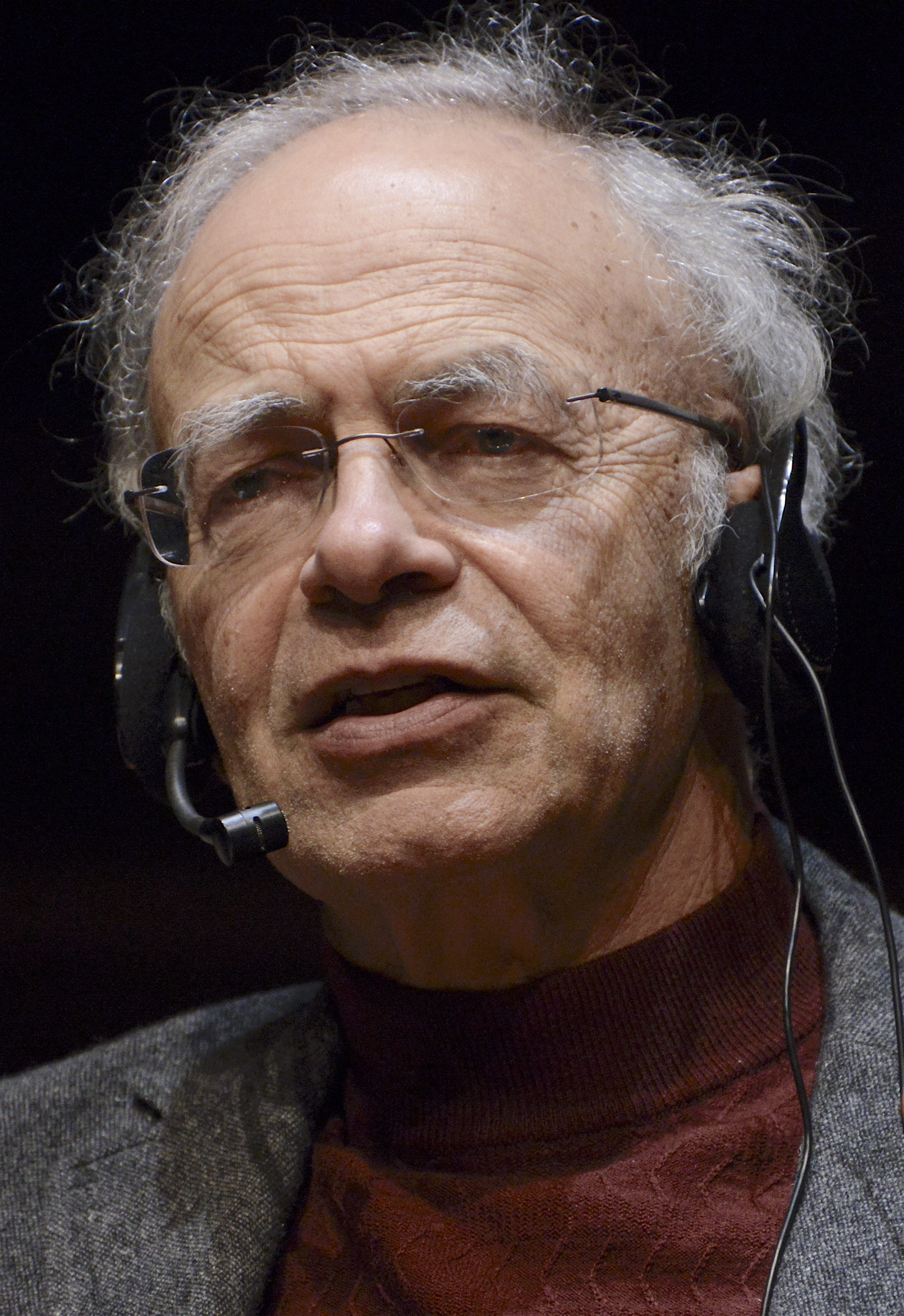 |
| 1975 | Genetics | Field development | At a gathering at the Asilomar Conference on Recombinant DNA at Asilomar, California, scientists discuss the benefits and risks of recombinant DNA research. The Recombinant DNA Advisory Committee is formed by the National Institutes of Health to provide guidance for researchers and institutions. The Institutional Biosafety Committees (IBCs) is also formed to review and oversee research involving hazardous biological materials.[46][47][48] | United States | |
| 1977 | General | Literature (book) | British philosopher Jonathan Glover publishes Causing Death and Saving Lives, which addresses practical moral questions about life and death decisions in the areas of abortion, infanticide, suicide, euthanasia, choices between people, capital punishment, and issues of war and peace.[49] | United Kingdom | |
| 1978 | General | Literature (encyclopedia) | The Encyclopedia of Bioethics launches its first edition, becoming the first reference book to focus exclusively on the field of bioethics.[50][6] | ||
| 1978 | Biopolitics | Concept development | French philosopher Michel Foucault elaborates further his concept of biopower in his lecture courses delivered at the Collège de France.[51] | France | 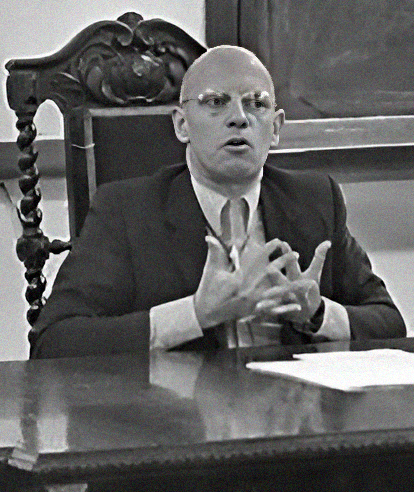 |
| 1979 | Biological agent use | Notable case | An anthrax outbreak in Sverdlovsk (Soviet Union) occurs when spores of anthrax are accidentally released from a Soviet military research facility. In what would be considered among the largest biological weapons accident, approximately 100 people die. Sheep become ill with anthrax as far as 200 kilometers from the release point.[52][53][54] | Russia | |
| 1980 | Genetic engineering | Policy | In the Diamond v. Chakrabarty case the United States Supreme Court rules that a genetically modified bacterium can be patented because it is the product of human ingenuity. This sets a precedent for patents on other life forms and helps to establish solid intellectual property protection for the new biotechnology industry.[46] | United States | |
| 1980 | Philosophy of medicine, general bioethics | Literature (journal) | Peer-reviewed medical journal Theoretical Medicine and Bioethics is first issued.[55] | ||
| 1982 | Scientific misconduct | Literature (book) | William Broad and Nicholas Wade publish Betrayers of the Truth, which attempts to reveal much of the scientific misconduct that happens at this time.[56] | United States |  |
| 1986 | General | Literature (journal) | Peer-reviewed academic journal Biology and Philosophy is launched.[57] | ||
| 1986 | Biocentrism | Literature (book) | American philosopher Paul W. Taylor publishes Respect for Nature: A Theory of Environmental Ethics which discusses biocentrism. Taylor maintains that biocentrism is an "attitude of respect for nature", whereby one attempts to make an effort to live one's life in a way that respects the welfare and inherent worth of all living creatures.[58][59] | United States | |
| 1987 | General | Literature (book) | Ren-zong Qiu's Bioethics is published as the first bioethics book in China.[60] | China | |
| 1987 | General | Literature (journal) | Peer-reviewed academic journal Bioethics is launched.[61] | ||
| 1988 | Environmental ethics | Literature (journal) | The Journal of Agricultural and Environmental Ethics is established.[62] | ||
| 1988 | Genetically modified mice | Notable case | Harvard University and Dow Chemical Company patent a genetically engineered mouse used to study cancer. This invention would become highly controversial as it involves the genetic manipulation of animals, particularly mammals.[63][64][65][46] | United States | |
| 1988 | General | Literature (book) | Van Rensselaer Potter publishes Global bioethics,[6] which defines bioethics as "Biology combined with diverse humanistic knowledge forging a science that sets a system of medical and environmental priorities for acceptable survival."[33] | ||
| 1989 | Research ethics | Literature (book) | The United States National Academy of Sciences publishes On Being A Scientist, a free, short book on research ethics for scientists in training.[46][66][67][68] | United States | |
| 1990 | General | Literature (column) | American medical ethicist Sigrid Fry-Revere starts the column Legal Trends in Bioethics for the Journal of Clinical Ethics.[69] The column "tracks bioethics related issues through all stages of litigation, legislation, and regulation at both the federal and state levels, as well as occasionally mentioning exceptional legal developments in other countries."[70] | United States | 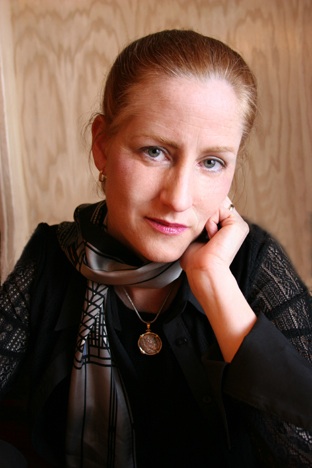 |
| 1990 | Genetic discrimination | Notable case | The Human Genome Project is launched by the United States as a US$20 billion effort to map and sequence the human genome. At the onset of this project, several ethical, legal, and social concerns would be raised in regard to how increased knowledge of the human genome could be used to discriminate against people.[71][72] | United States |  |
| 1991 | General | Organization | London-based Nuffield Council on Bioethics is established by the Nuffield Foundation, with the purpose to adress numerous bioethical issues in need of analysis.[73][74][75] | United Kingdom | |
| 1991 | General | Literature (journal) | The Kennedy Institute of Ethics Journal is launched.[76][77] | United States | |
| 1992 | Healthcare | Literature (journal) | Quarterly peer-reviewed academic journal Cambridge Quarterly of Healthcare Ethics is launched.[78] | ||
| 1992 | Scientific misconduct | Literature (book) | The United States National Academy of Sciences publishes Responsible Science: Ensuring the Integrity of the Research Process. The book estimates the incidence of misconduct, discusses some of the causes of misconduct, proposes a definition of misconduct, and recommends some strategies for preventing misconduct.[46][79][80] | United States | |
| 1992 | Environmental ethics | Literature (journal) | Peer-reviewed academic journal Environmental Values is established.[81][82] | United Kingdom | |
| 1992 | Research integrity | Organization | The United States Office of Research Integrity is formed. It focuses on research integrity.[83] | United States | |
| 1993 | Human cloning | Notable case | Researchers successfully clone human embryos.[46] | ||
| 1993 | General | Organization | The International Bioethics Committee is established by UNESCO to provide guidance on ethical and legal issues raised by research in medicine, biological sciences and associated technologies, and to reinforce knowledge in ethics.[84][85] |  | |
| 1994 | Race and intelligence | Literature (book) | American psychologist Richard Herrnstein and American political scientist Charles Murray publish The Bell Curve, a controversial book that reignites the centuries old debate about biology, race and intelligence.[86] | United States |  |
| 1995 | Human and non-human animal patenting | Activism | About 200 religious leaders join in Washington, DC., with leading biotechnology critic Jeremy Rifkin in a press conference named the "Joint Appeal against Human and Animal Patenting", protesting the patenting of plants, animals, and human body parts.[46][87][88] | United States | |
| 1995 | Healthcare | Organization | The Johns Hopkins Berman Institute of Bioethics is established. It is dedicated to the study of complex moral and policy issues in biomedical science, health care, and health policy, promoting research in bioethics.[89][90] | United States | |
| 1995 | General | Organization | The University of Toronto Joint Centre for Bioethics is established.[91] | Canada | |
| 1995 | Biomedicine | Concept development | Daniel Callahan defines bioethics as a science “which is the product of biomedical achievements related to the environment and social sciences”.[6] | United States | |
| 1995 | Biological agent use | Notable case | The Tokyo subway sarin attack is perpetrated. This would further increase concern among scientists and defense analysts about the use of chemical or biological weapons.[92] | Japan | |
| 1995 | Science and engineering | Literature (journal) | Quarterly peer-reviewed scientific journal Science and Engineering Ethics is first issued.[93] | ||
| 1995 | Budhist bioethics | Literature (book) | British bioethicist Damien Keown publishes Buddhism & Bioethics, which discusses issues in medical ethics from a Buddhist perspective, examining issues including abortion, embryo research and euthanasia.[94] | United Kingdom | |
| 1996 | Cloning | Notable case | Dolly is born as the first mammal ever to be cloned from another individual’s body cell. Her birth would be announced in 1997, followed by several European nations banning human cloning. The United States Congress would consider a bill to ban all human cloning but changes its mind after scientists argue that the bill would undermine biomedical research.[46][95][96] | United Kingdom | 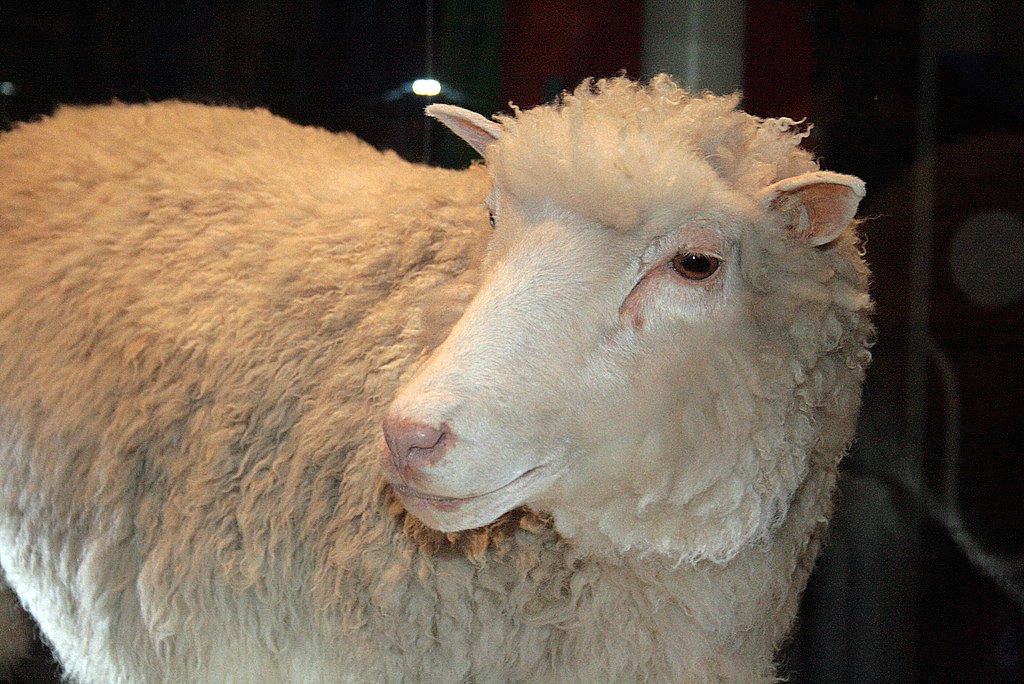 |
| 1996 | General | Organization | The National Bioethics Advisory Commission is established.[97][98] | United States |  |
| 1996 | Ecology | Literature (book) | American philosopher David Abram publishes The Spell of the Sensuous: Perception and Language in a More-than-Human World. Abram coins the phrase "the more-than-human world" as a way of referring to earthly nature.[99] | United States |  |
| 1996 | Healthcare | Literature (book) | American philosopher H. Tristram Engelhardt Jr. publishes The Foundation of Bioethics, in which he states “Moral diversity is real. It is real in fact and in principle. Bioethics and healthcare policy have yet to take this diversity seriously. Those who teach bioethics, those who engage in bioethics committees, even those who produced textbooks tend to discount the diversity of understanding regarding the morality of particular health care choices (e.g., regarding abortion, commercial surrogacy, euthanasia/ germline genetic engineering, inequalities in access to health care, infanticide, organ sales) or the nature of morality (e.g., theological, deontological, virtue-based)".[6] | United States | |
| 1996 | Feminist bioethics | Literature (book) | American feminist philosopher Rosemarie Tong publishes Feminist Approaches To Bioethics: Theoretical Reflections And Practical Applications, which attemps to introduce to the field of feminist bioethics.[100] | United States | |
| 1997 | Human genetics | Treaty | The UNESCO's International Bioethics Committee adopts the International Declaration on Human Genetic Data, its first international declaration.[101] | ||
| 1997 | Publication ethics | Organization | The Committee On Publication Ethics is established in the United Kingdom, consisting in academic journal editors and others who are concerned about the integrity of what is peer-reviewed and published in journals.[102][103] | United Kingdom | |
| 1997 | Wisdom of repugnance | Concept development | The term "wisdom of repugnance" is coined by American physician Leon Kass in an article in The New Republic. Kass states that disgust is not an argument per se, but says that "in crucial cases... repugnance is the emotional expression of deep wisdom, beyond reason's power fully to articulate."[104] | United States |  |
| 1997 | Medical ethics | Organization | The National Center for Bioethics in Research and Health Care is established at Tuskegee University, as part of the United States Government official apology for the Tuskegee Syphilis Study. See Timeline of medical ethics.[105] | United States |  |
| 1997 | Medical ethics | Literature (book) | American moral philosopher Bernard Gert publishes Bioethics: A Return to Fundamentals, which attempts to integrate moral philosophy with clinical medicine "to present a comprehensive summary of the theory, concepts, and lines of reasoning underlying the field of bioethics".[106] | United States |  |
| 1998 | General | Literature (book) | Peter Singer and Helga Kuhse publish A companion to Bioethics.[107] | ||
| 1998 | Human embryonic development | Notable case/policy | As scientists perfect methods for growing human embryonic stem cells, some countries ban the research, while others promote it.[108][109][110][46] | ||
| 1998 | Human genome sequencing | Notable case | American biotechnologist Craig Venter forms Celera Genomics and begins a private effort to sequence the human genome, using dozens of automated sequencing machines.[46] | United States |  |
| 1998 | General | Organization | The American Society for Bioethics and Humanities is founded.[111] It is dedicated to promoting research and the exchange of ideas in bioethics and related disciplines in the humanities.[112] | United States | |
| 1998 | General | Literature (journal) | Peer-reviewed academic journal Ethical Theory and Moral Practice is first issued.[113] | ||
| 1999 | General | Literature (journal) | AMA Journal of Ethics is launched.[114] | United States | |
| 1999 | General | Literature (journal) | The American Journal of Bioethics is launched.[115] | United Sattes | |
| 1999 | Confucian Bioethics | Literature (book) | Chinese bioethicist Lee Shui-chuen publishes Confucian Bioethics (in Chinese).[116][117][118] | China | |
| 1999 | General | Literature (book) | American philosopher Carl Elliott publishes A Philosophical Disease: Bioethics, Culture and Identity.[119] | United States |  |
| 1999 | General | Literature (book) | American professor Robert M. Veatch publishes The Basics of Bioethics, which attempts to introduce readers of all backgrounds to the field of bioethics in an accessible way. This book is based on the author's training in both religious and philosophical ethics.[120] | United States | |
| 2000 | General | Literature (book) | Kevin Wildes publishes Moral Acquaintances: Methodology in Bioethics.[121] | ||
| 2000 | Darwinism | Literature (book) | British bioethicist Janet Radcliffe Richards publishes Human Nature After Darwin: A Philosophical Introduction, which investigates the implications of Darwinism for understanding humans and their situation.[122] | United Kingdom |  |
| 2001 | Catholic bioethics | Literature (journal) | Peer-reviewed journal The National Catholic Bioethics Quarterly is launched.[123] | United States | |
| 2001 | Scientific integrity | Policy | Several journals start requiring authors to describe their responsibilities when publishing research.[46] | ||
| 2001 | Stem cell research | Organization | The International Society for Stem Cell Research is established to promote the exchange and dissemination of information and ideas relating to stem cells.[124][125] | ||
| 2001 | Biomedical science, technology | Organization | The President's Council on Bioethics is created by United States President George W. Bush to advice the President on bioethical issues that may emerge as a consequence of advances in biomedical science and technology.[126] | United States |  |
| 2001 | Genetic studies | Organization | The Center for Genetics and Society is established.[127] | United States | |
| 2002 | Cloning | Policy | The President's Council on Bioethics recommends that the United States ban reproductive cloning and enact a moratorium on research cloning.[46][128][129][130] | United States | |
| 2002 | Earth jurisprudence | Concept development | South African author Cormac Cullinan publishes Wild Law: A Manifesto for Earth Justice, which describes the first detailed exploration of earth jurisprudence in print and introduces the term "Great Jurisprudence". Cullinan states that the survival all living beings requires us humans to alter fundamentally our understanding of the nature and purpose of law and governance, rather than merely changing laws.[131][132] | South Africa | |
| 2002 | Biological agent use | Literature (journal) | Researchers publish several papers in prominent journals with direct implications for bioterrorism. Some described methods include one for genetically engineering a form of mousepox virus that is much deadlier than the naturally occurring strain. Another shows how to make the poliovirus by obtaining supplies from a mail-order company. Another study develops a mathematical model for showing how many people would be killed by infecting the United States milk supply with botulinum toxin.[133] | ||
| 2002 | Biotechnology | Organization | The Toi Te Taiao: The Bioethics Council is established. Its goal is: "To enhance New Zealand's understanding of the cultural, ethical and spiritual aspects of biotechnology and ensure that the use of biotechnology has regard for the values held by New Zealanders." [134][135] | New Zealand | |
| 2003 | Biological research | Policy | The American Society for Microbiology, the National Academy of Sciences, and the Center for Strategic and International Studies hold a meeting to discuss the censorship on biological research that poses security risks. Self-censorship of some research is also agreed by journals.[136][137] | ||
| 2003 | General | Criticism | American medical anthropologist Paul Farmer criticizes bioethics noting that it tends to focus its attention on problems that arise from "too much care" for patients in industrialized nations, while giving little or no attention to the ethical problem of too little care for the poor.[138] Farmer characterizes the bioethics of handling morally difficult clinical situations, normally in hospitals in industrialized countries, as "quandary ethics", which he does not regard as unimportant, but argues, rather, that bioethics must be balanced and give due weight to the poor.[139] | United States |  |
| 2003 | Biological agent use | Notable case | The United States invades Iraq with the stated purpose of eliminating its chemical, biological, and nuclear weapons programs. So far, only evidence of weapons programs would be found, but no actual weapons.[46] | Iraq | |
| 2003 | Human genetics | Treaty | The International Bioethics Committee issues a second global instrument, the International Declaration on Human Genetic Data, which may be regarded as an extension of the Universal Declaration on the Human Genome and Human Rights.[140][141] | ||
| 2003 | Asian values | Literature (book) | Chinese bioethicist Qiu Renzong poublishes Bioethics: Asian Perspectives: A Quest for Moral Diversity, which addresses bioethical issues from comprehensive Asian perspectives and different from the western paradigm.[142] | ||
| 2004 | General | Literature (journal) | The Journal of Bioethical Inquiry is released by the University of Otago Bioethics Centre.[143] | New Zealand | |
| 2004 | Transhumanism (democratic) | Literature (book) | American bioethicist James Hughes publishes Citizen Cyborg, a non-fiction book which articulates democratic transhumanism as a socio-political ideology and program.[144] | United States | 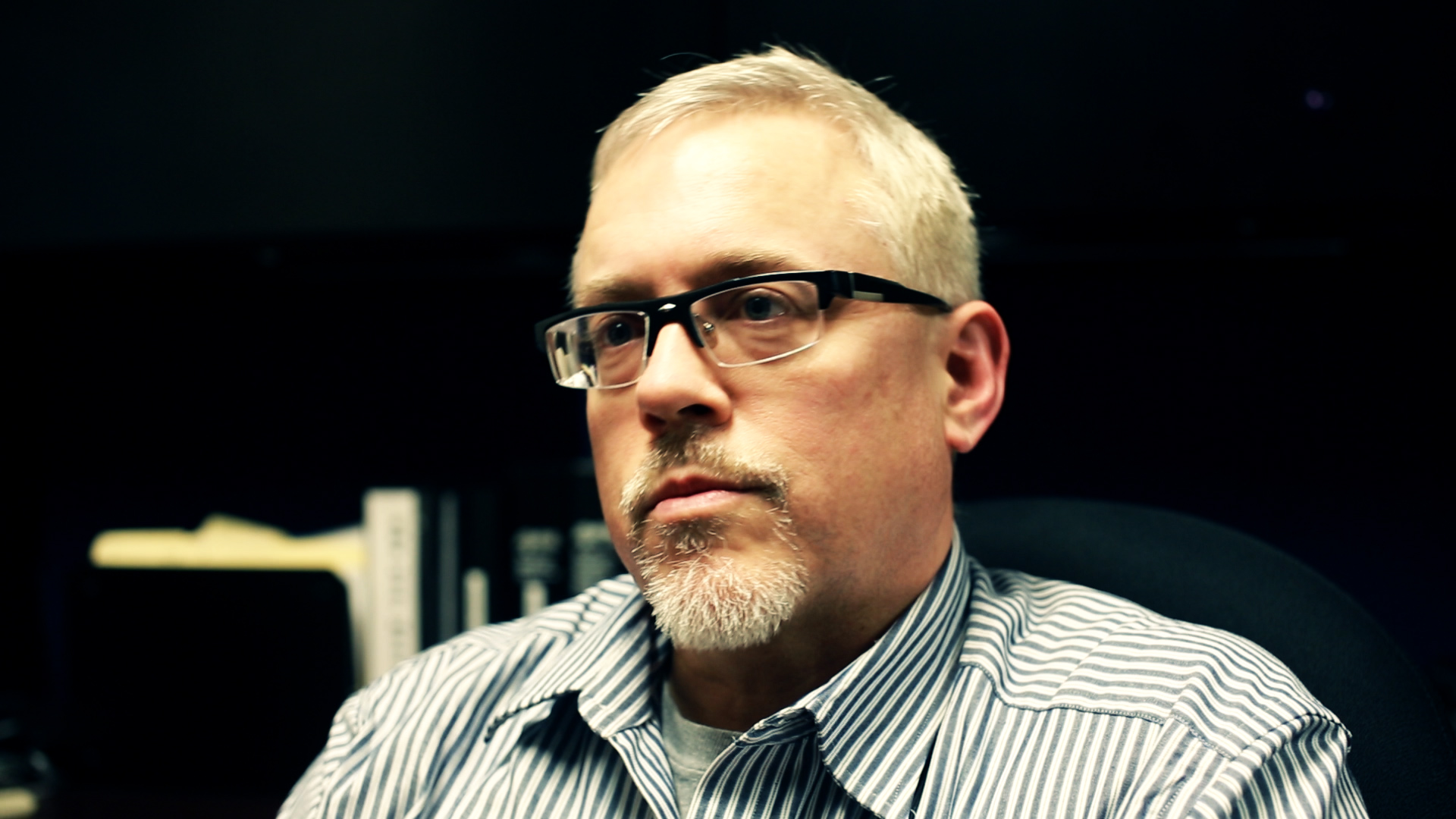 |
| 2002 | Transhumanism | Literature (book) | American political economist and philosopher Francis Fukuyama publishes Our Posthuman Future, which designates transhumanism as the world's most dangerous idea because he believes that it may undermine the egalitarian ideals of democracy (in general) and liberal democracy (in particular) through a fundamental alteration of "human nature".[145] |  | |
| 2005 | Human rights | Treaty | The Universal Declaration on Bioethics and Human Rights is adopted by UNESCO.[146][147] | ||
| 2005 | Biosecurity | Organization | The National Science Advisory Board for Biosecurity is established by the United States Department of Health and Human Services "to provide advice and guidance to federal agencies, scientists, and journals concerning oversight and public of research in biotechnology or biomedicine which can be readily applied to cause significant harm to public health, agriculture, the economy, or national security".[148] | United States | |
| 2005 | Healthcare, life science, biotechnology | Organization | Bioethics International (BEI) is established in the State of New York, with the mission "to empower professionals and organizations in healthcare, life science and biotechnology".[149][150] | United States | |
| 2005 | Human rights, health law | Literature (book) | American professor George Annas publishes American bioethics: crossing human rights and health law boundaries.[151] | United States | |
| 2005 | Organ trade | Literature (book) | American bioethicist Mark Cherry publishes Kidney for Sale by Owner: Human Organs, Transplantation, and the Market, which argues that healthcare "could be improved and lives saved by introducing a regulated transplant organs market rather than by well-meant, but misguided, prohibitions".[152] | United States | |
| 2006 | Antinatalism | Literature (book) | South African philosopher David Benatar publishes Better Never to Have Been: The Harm of Coming into Existence, in which he argues that coming into existence is always a serious harm, regardless of the feelings of the existing being once brought into existence, and that, as a consequence, it is always morally wrong to create more sentient beings.[153][154] | ||
| 2006 | Human enhancement | Field development | Nick Bostrom and Toby Ord introduce the reversal test as a heuristic designed to spot and eliminate status quo bias in the context of the bioethics of human enhancement.[155] |  | |
| 2006 | Social science, biology | Literature (journal) | Quarterly peer-reviewed scientific journal BioSocieties is released.[156] | ||
| 2007 | African American bioethics | Literature (book) | Lawrence Prograis and Edmund D. Pellegrino publish African American Bioethics: Culture, Race, and Identity, which discusses the existence of a distinctive African American bioethics.[157][158] | United States | |
| 2007 | General | Literature (book) | Italian bioethicist Elio Sgreccia publishes Manuale di bioetica. Fondamenti ed etica biomedica, which presents a reason-based philosophical approach to bioethics linking with the natural law and the moral teachings of the Catholic Church.[159][160][161] | Italy |  |
| 2008 | Feminist bioethics | Literature (journal) | The International Journal of Feminist Approaches to Bioethics is launched to encourage more work in feminist bioethics.[162][163] | ||
| 2008 | Genetic discrimination | Policy | The Genetic Information Nondiscrimination Act (GINA) is passed on May 21 in the United States, making genetic discrimination illegal in the country.[164] | United States | |
| 2008 | General | Competition | The Bioethics Bowl (a spin-off of the Ethics Bowl) launches in the United States as an intercollegiate, academic competition among undergraduate students at accredited four-year institutions of higher education. Taking place each April on a college campus, it focuses exclusively on ethical issues in the health and biological sciences.[165] | United States |  |
| 2008 | Medical ethics | Organization | The Center for bioethics and medical humanities is established at the University of Mississippi Medical Center.[166] | United States | |
| 2009 | Biomedicine | Organization | Presidential Commission for the Study of Bioethical Issues is established by United States President Barack Obama to advise the president and the administration on bioethical issues arising from advances in biomedicine and related areas of science and technology.[167] | United States | |
| 2009 | General | Organization | The Bangladesh Bioethics Society is established.[168] | Bangladesh | |
| 2009 | General | Literature (book) | American scholar Lewis Vaughn publishes Bioethics: Principles, Issues, and Cases, which attempts to explore the philosophical, medical, social, and legal aspects of key bioethical issues.[169][170] | United States | |
| 2009 | General | Literature (book) | James B. Tubbs publishes Handbook of Bioethics Terms, a glossary-style book describing over 400 entries of importance to the field.[171] | United States | |
| 2010 | General | Literature (book) | George Annas publishes Worst case bioethics: death, disaster, and public health[172], which examines worst case scenarios in the United States and assesses their impacts on individuals, physicians and the government. It is written at the intersection of law, bioethics, public health, and human rights.[173] | United States | |
| 2010 | Animal rights | Literature (book) | British ethicist Alasdair Cochrane publishes An Introduction to Animals and Political Theory.[174] | United Kingdom | |
| 2011 | General | Literature (journal) | Triannual academic journal Narrative Inquiry in Bioethics is first issued.[175] | ||
| 2011 | Religion | Literature (book) | Australian Catholic Church prelate Anthony Fisher publishes Catholic Bioethics for a New Millennium, which discusses bioethics in the Catholic tradition.[176] |  | |
| 2012 | General | Organization | The Center for the Study of Bioethics is founded by Serbian American philosopher Vojin Rakić with the purpose to stimulate scientific debate on a variety of issues bioethics deals with. It is based in Belgrade, Serbia.[177] | 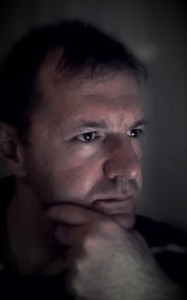 | |
| 2012 | General | Literature (journal) | The Canadian Journal of Bioethics is established.[178] | Canada | |
| 2013 | Genetic privacy | Notable case | Israeli-American scientist Yaniv Erlich conducts a study revealing vulnerabilities in the security of public databases that contain genetic data. The stury reports a method to discover the identity of anonymous research subjects whose genomes have been sequenced as part of a genomics project.[179] | ||
| 2013 | DNA extraction | Policy | The Supreme Court of the United States rules that isolated and purified DNA cannot be patented and that only DNA that has been modified by human beings can be patented.[180] | United States | |
| 2013 | General | Literature (book) | American bioethicist Arthur Caplan writes Contemporary Debates in Bioethics, which features a collection of debate-style arguments contributed by many bioethics scholars. The book focuses on core bioethical concerns of the twenty-first century.[181] | United States |  |
| 2013 | General | Literature (book) | British bioethicist Alastair V. Campbell publishes Bioethics: The Basics, which introduces to the foundational principles, theories and issues in the study of medical and biological ethics.[182] | United Kingdom |  |
| 2014 | Reproducibility | Policy | Various funding agencies and journals, including the National Institutes of Health, Science, and Nature, take steps to promote reproducibility in science in response to reports that many published studies in the biomedical, behavioral, and physical sciences are not reproducible.[46] | ||
| 2014 | Right to die | Policy | New Mexico Second District Judge Nan Nash rules that terminally ill patients have the right to aid in dying under the state constitution, i.e., making it legal for a doctor to prescribe a lethal dose of medication to a terminally ill patient.[183] | United States | |
| 2015 | Medical ethics | Literature (book) | American bioethicist Alice Dreger publishes Galileo's Middle Finger, which discusses the ethics of medical research.[184] | United States |  |
| 2015 | Criticism | Steven Pinker publishes article at The Boston Globe titled The moral imperative for bioethics, criticizing the field for slowing down scientific research through regulations, moratoria, and threats of prosecution based on "nebulous but sweeping principles" such as dignity, sacredness, or social justice. Pinker also criticizes bioethics for "thwarting research that has likely benefits now or in the near future by sowing panic about speculative harms in the distant future".[185] | United States | 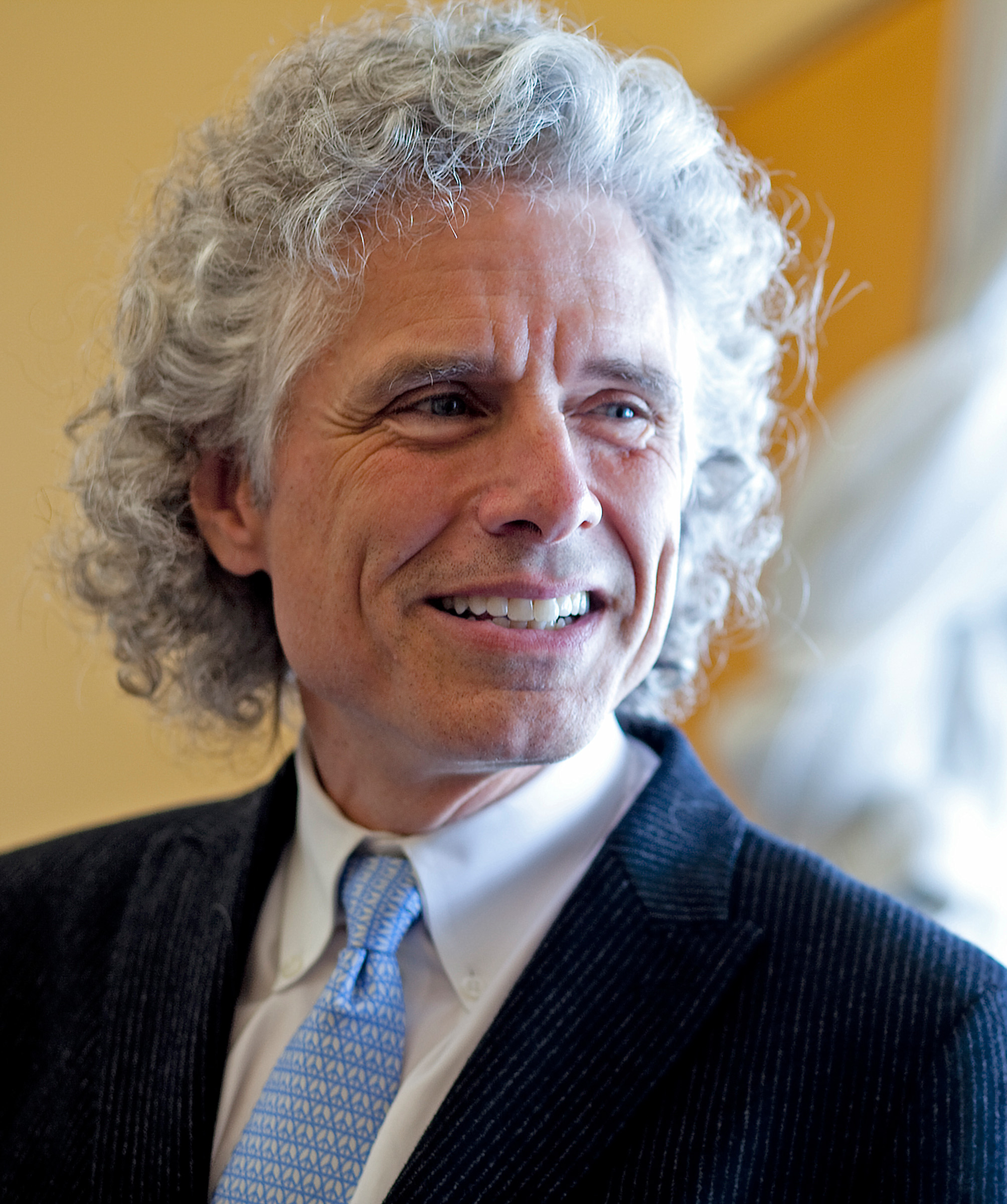 | |
| 2016 | Cryonics | Notable case | The English High Court rules in favor of a mother's right to seek cryopreservation of her terminally ill 14-year-old daughter, as the girl wanted. This case is interpreted as a conventional dispute over the disposal of the girl's body, as the girl's father opposed cryopreservation.[186] | United Kingdom | |
| 2016 | Criticism | American professor John Hoberman criticizes the field of bioethics stating that it lacks diversity in thought, particularly with regards to race, pointing out that bioethicists have been traditionally resistant to expanding their discourse to include sociological and historically relevant applications.[187] | United States |  | |
| 2017 | Criticism | Finnish historian Heikki Saxén criticizes the field of bioethics, arguing that the diversity of thought and social inclusivity are the two essential cornerstones of the field, albeit they have not been fully realized.[188] | Finland |  | |
| 2018 | General | Literature (book) | Canadian bioethicist Francoise Baylis publishes Bioethics in Action, which presents first-person case studies of attempts to fix serious ethical problems in medical practice and research.[189] |  | |
| 2018 | Sentientism | Literature (book) | Alasdair Cochrane publishes Sentientist Politics: A Theory of Global Inter-Species Justice. The book argues in favour of a "sentientist cosmopolitan democracy: a global political system made up of overlapping local, national, regional and global communities comprised of human and non-human members who exist within shared communities of fate".[190] | United Kingdom | |
| 2019 | Biotechnology | Notable comment | Israeli historian Yuval Noah Harari says that artificial intelligence and biotechnology could destroy what it means to be human, seeing an existential threat in an arms race in artificial intelligence and bioengineering. Harari expresses the need for close co-operation between nations to solve the threats by technological disruption.[191] |  | |
| 2020 | Immunity | Criticism | Harvard bioethicist Natalie Kofler publishes an article discussing "immunity passports" which consist in the idea of issuing authorizations to work and circulate in society for those having antibodies to the coronavirus after recovering from an infection. Kofler argues that this could do more harm than good, as a system that hinges on a blood test could cut off already marginalized populations from access to critical public resources, wherein "an immunoprivileged sort of status or an immunodeprived status" would dictate "where and what they can go do."[192][193] | United States | |
| 2021 | Human subject research | Criticism | Bryan Caplan writes an article criticizing bioethicists for habitually invoking the Tuskegee Syphilis Study to justify current Human Subjects Review, opposing voluntary human experimentation, and attempting to avoid people from helping others, even if experimental subjects volunteer for no money at all.[194] | United States |  |
Numerical and visual data
Mentions on Google Scholar
The following table summarizes per-year mentions on Google Scholar as of May 19, 2021.
| Year | bioethics | cloning bioethics | bioethics euthanasia | bioethics in nursing | bioethics and law | bioethics in biotechnology |
|---|---|---|---|---|---|---|
| 1980 | 1,490 | 28 | 131 | 137 | 395 | 12 |
| 1985 | 2,200 | 55 | 215 | 230 | 660 | 64 |
| 1990 | 3,110 | 65 | 506 | 332 | 1,020 | 111 |
| 1995 | 5,960 | 150 | 708 | 732 | 2,090 | 273 |
| 2000 | 7,380 | 784 | 904 | 1,180 | 3,340 | 801 |
| 2002 | 11,000 | 1,870 | 1,050 | 1,620 | 4,910 | 1,700 |
| 2004 | 11,900 | 1,590 | 1,090 | 1,900 | 5,320 | 1,730 |
| 2006 | 13,400 | 1,750 | 1,270 | 2,350 | 6,460 | 2,020 |
| 2008 | 15,800 | 1,700 | 1,430 | 2,840 | 7,390 | 2,090 |
| 2010 | 15,100 | 1,650 | 1,490 | 3,350 | 8,690 | 2,410 |
| 2012 | 21,500 | 4,610 | 1,580 | 4,030 | 13,000 | 5,710 |
| 2014 | 23,600 | 1,500 | 1,730 | 5,300 | 12,000 | 2,740 |
| 2016 | 26,000 | 1,640 | 1,980 | 5,360 | 12,400 | 3,330 |
| 2017 | 26,700 | 1,620 | 2,000 | 5,670 | 13,000 | 3,350 |
| 2018 | 27,200 | 1,700 | 2,140 | 6,100 | 13,400 | 3,610 |
| 2019 | 27,300 | 1,730 | 1,910 | 6,540 | 14,000 | 3,780 |
| 2020 | 27,700 | 1,630 | 2,330 | 7,570 | 16,100 | 3,930 |
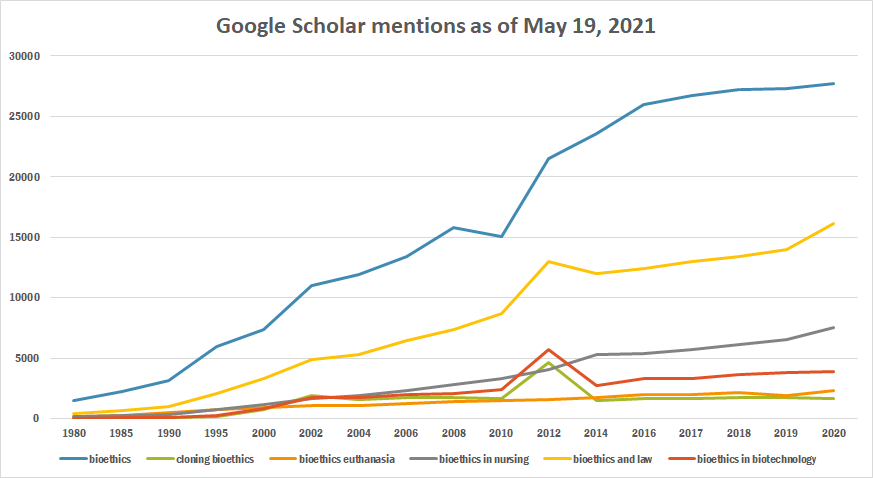
Google Trends
The chart below shows Google Trends data comparing Bioethics (field of study) and Bioethics (search term), from January 1, 2004 to December 12, 2020, when the screenshot was taken. A declining interest is appreciated.[195]

The comparative chart below shows Google Trends data for Bioethics (Search term) and Medical ethics (Search term) from January 2004 to February 2021, when the screenshot was taken. Interest is also ranked by country and displayed on world map.[196]
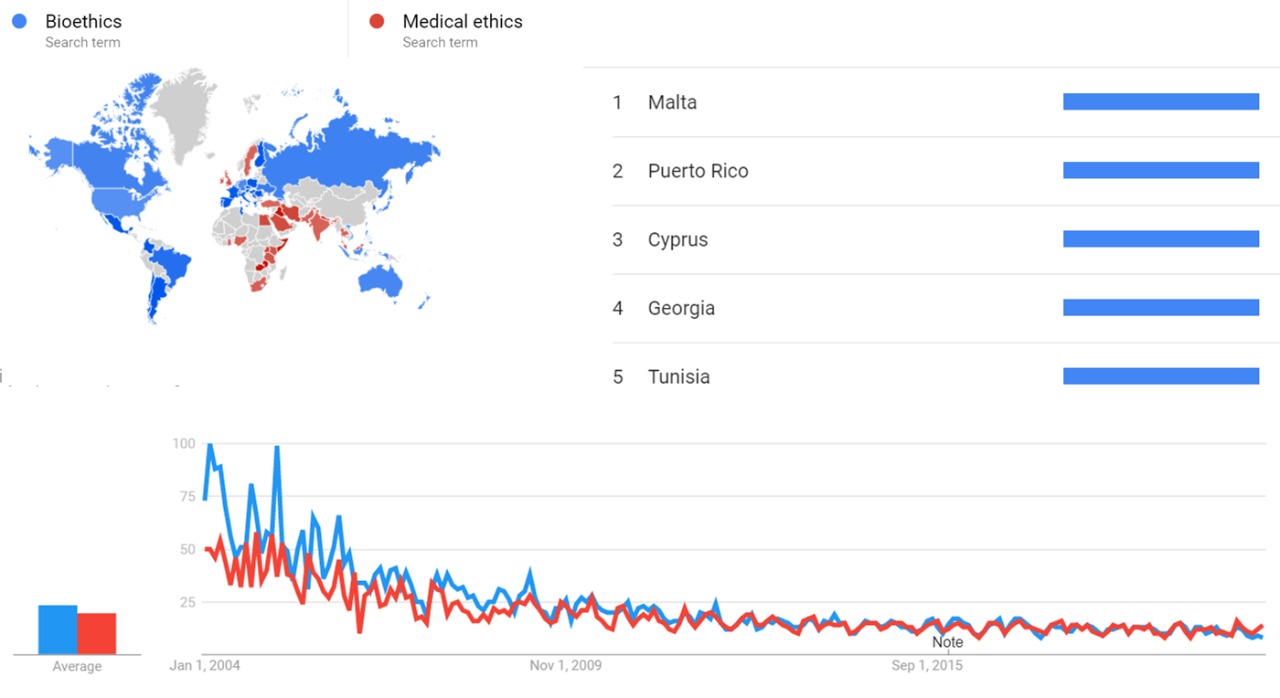
Google Ngram Viewer
The chart below shows Google Ngram Viewer data comparing both "bioethics" and "medical ethics" search strings (case-insensitive), from 1700 to 2019. See how data for "bioethics" starts soaring at around 1960s, which correlates with the birth of bioethics as a distinct field of academic study in the United States.[197]
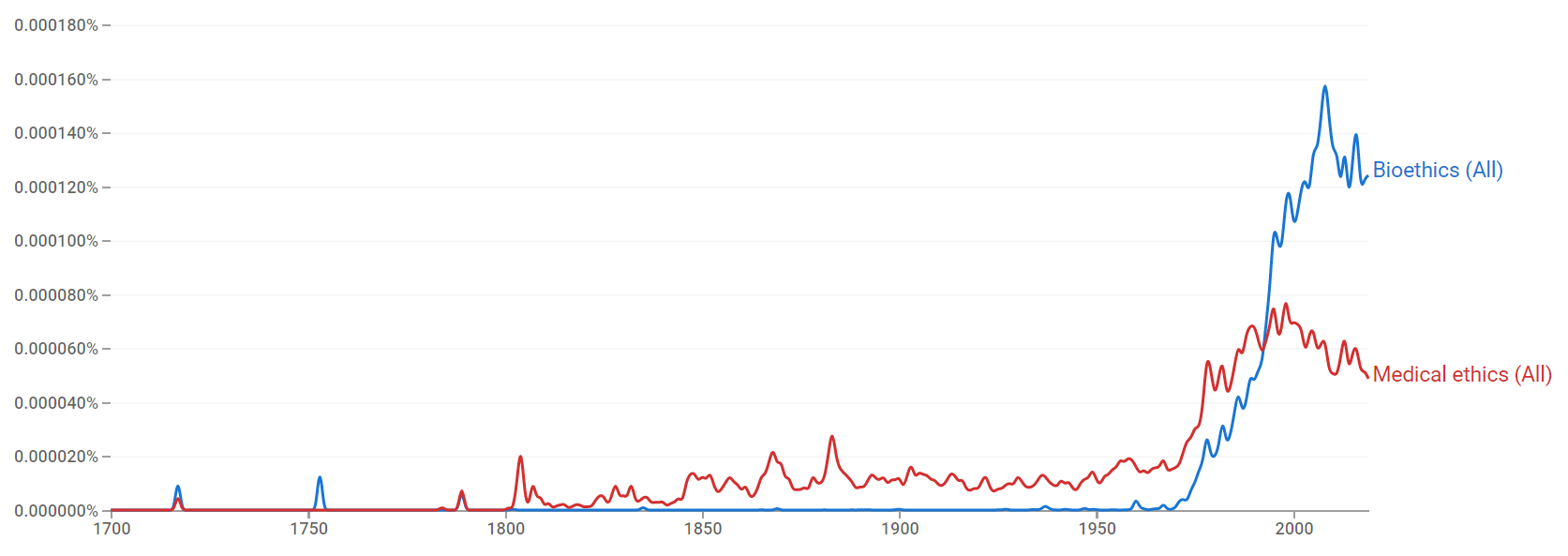
Wikipedia Views
The chart below shows Wikipedia views for the article Bioethics for desktop, mobile-web, desktop-spider, mobile-web-spider and mobile app, from July 2015 to December 2020.[198]
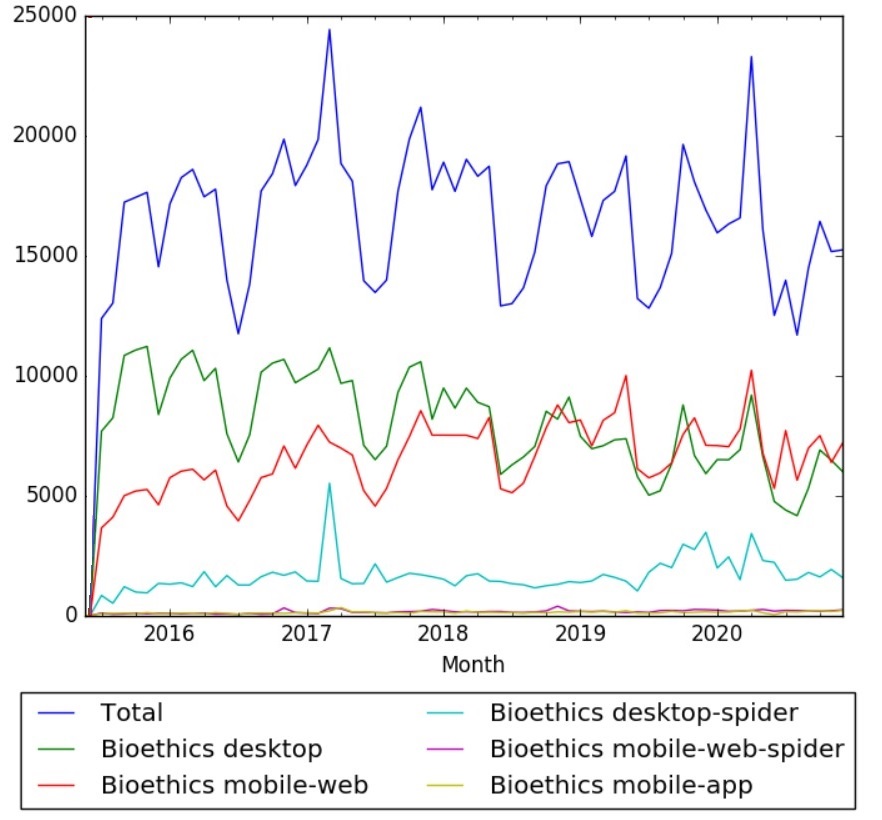
Gallup polls
The charts below shows Gallup polls describing public opinion in the United States regarding moral issues.[199]
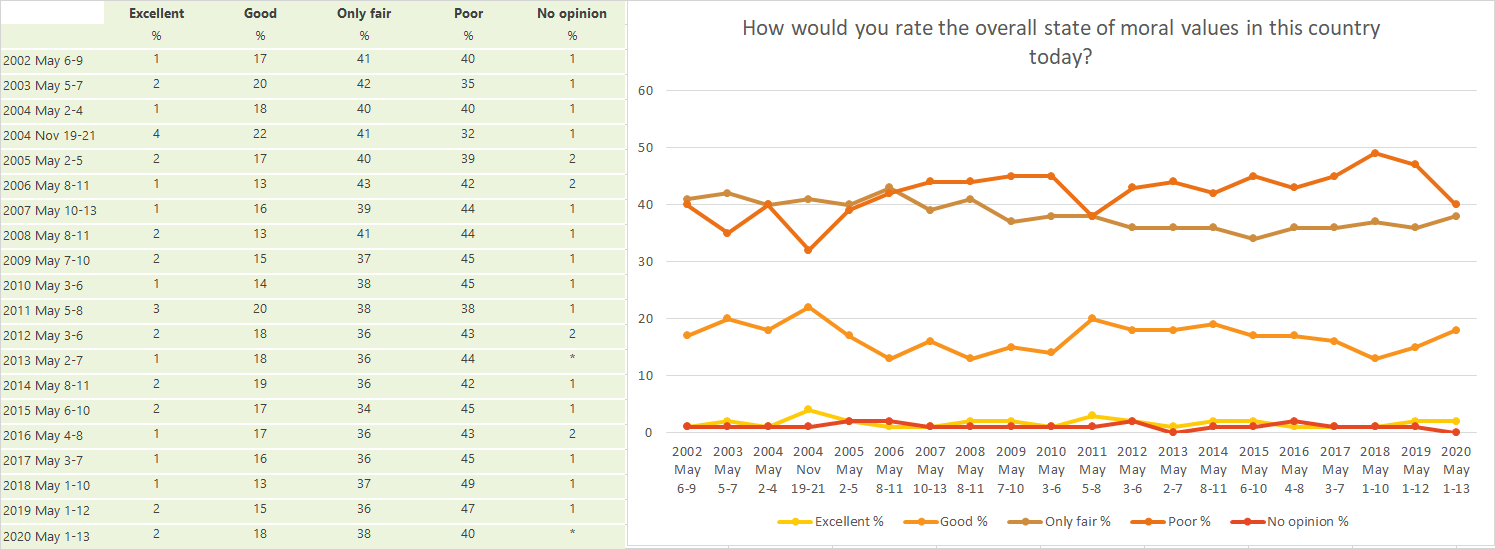
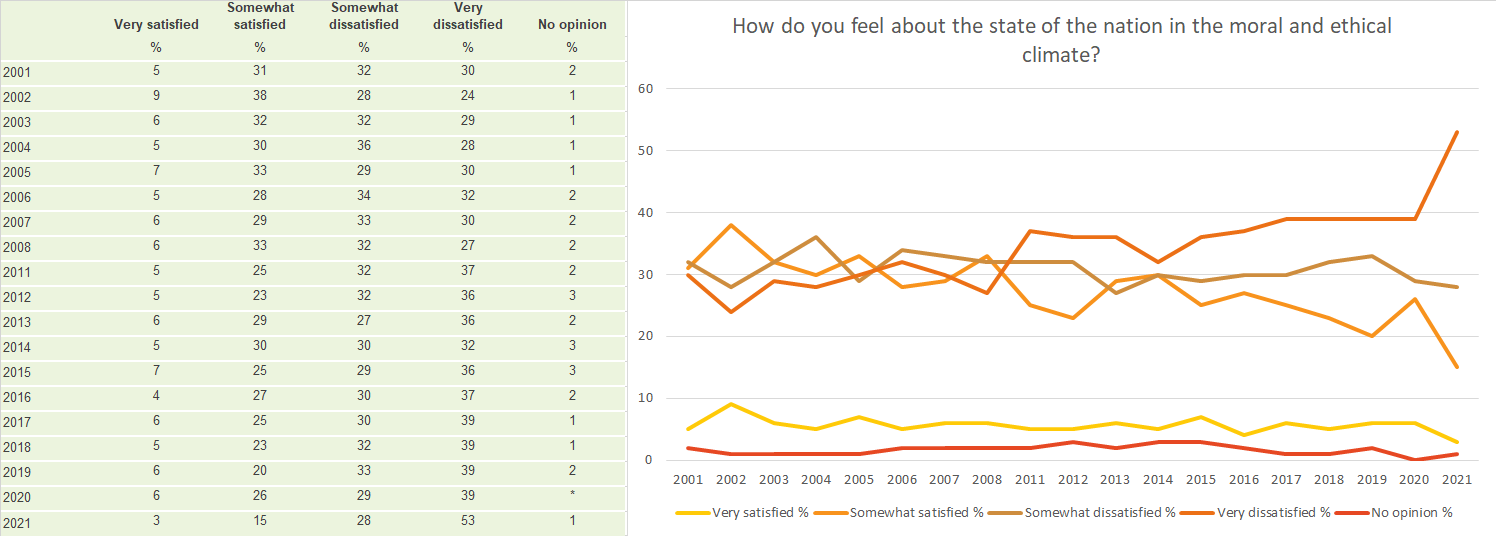
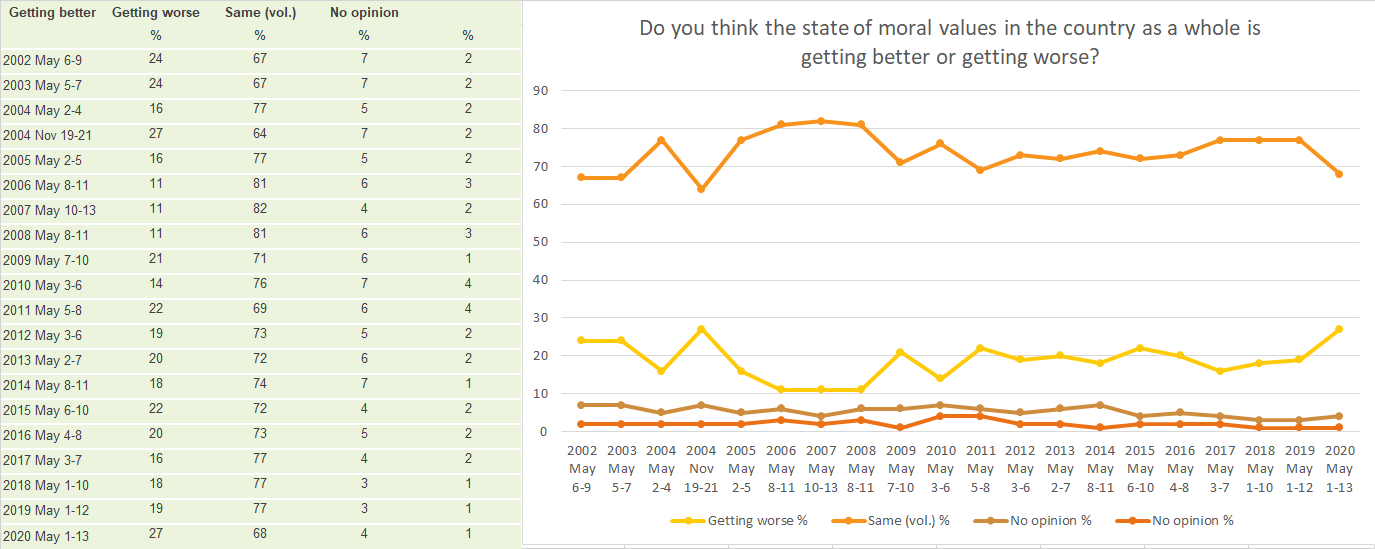
Meta information on the timeline
How the timeline was built
The initial version of the timeline was written by User:Sebastian.
Funding information for this timeline is available.
Feedback and comments
Feedback for the timeline can be provided at the following places:
- FIXME
What the timeline is still missing
- Thirty-three randomly selected bioethics papers (provided by Issa)
Timeline update strategy
See also
- Timeline of medical ethics
- Timeline of animal testing
- Timeline of brain preservation (includes cryonics)
- Timeline of animal welfare and rights
External links
References
- ↑ 1.0 1.1 1.2 1.3 "Bioethics". britannica.com. Retrieved 18 September 2018.
- ↑ 2.0 2.1 2.2 2.3 2.4 2.5 2.6 "Bioethics". iep.utm.edu. Retrieved 1 September 2018.
- ↑ 3.0 3.1 3.2 "Bioethics - History Of Bioethics". science.jrank.org. Retrieved 1 September 2018.
- ↑ "Bioethics and Policy—A History". thehastingscenter.org. Retrieved 11 October 2020.
- ↑ "Ethical timeline". radford.edu. Retrieved 13 July 2020.
- ↑ 6.0 6.1 6.2 6.3 6.4 6.5 6.6 6.7 "Russian School of Bioethics: History and the Present". intechopen.com. Retrieved 20 December 2019.
- ↑ Kerasidou, Angeliki; Parker, Michael. "Does science need bioethicists? Ethics and science collaboration in biomedical research". doi:10.1177/1747016114554252. PMC 4587541. PMID 26430467.
{{cite journal}}: Cite journal requires|journal=(help) - ↑ "Francis Bacon (1561—1626)". iep.utm.edu. Retrieved 12 July 2020.
- ↑ "REFLECTIONS ON THE DECLINE OF SCIENCE IN ENGLAND, AND ON SOME OF ITS CAUSES". gutenberg.org. Retrieved 7 November 2020.
- ↑ "Wallace and Darwin". jstor.org. Retrieved 12 July 2020.
- ↑ Roberto Esposito (2008). Bios: Biopolitics and Philosophy. U of Minnesota Press. p. 16. ISBN 978-0-8166-4989-1.
- ↑ Gunneflo, Markus (2015). "Rudolf Kjellén: Nordic biopolitics before the welfare state". Retfærd. 35 (3). ISSN 0105-1121.
- ↑ "Mexico City to Legalize Abortion Despite Protests". banderasnews.com. Retrieved 1 July 2020.
- ↑ Liesen, Laurette T. and Walsh, Mary Barbara, The Competing Meanings of 'Biopolitics' in Political Science: Biological and Post-Modern Approaches to Politics (2011). APSA 2011 Annual Meeting Paper Template:Ssrn
- ↑ Leopold, A. 1949. A Sand County Almanac. Oxford University Press, New York.
- ↑ Eaton, Margaret L.; Kennedy, Donald. Innovation in Medical Technology: Ethical Issues and Challenges.
- ↑ Nikolova, Blagovesta. The RRI Challenge: Responsibilization in a State of Tension with Market Regulation.
- ↑ Charles Kinsey, Alfred; Baxter Pomeroy, Wardell; Eugene Martin, Clyde. Sexual Behavior in the Human Male.
- ↑ "Sexual Behavior in the Human Male". britannica.com. Retrieved 12 July 2020.
- ↑ "Editorial: "Science, Technology, & Human Values" at 40". jstor.org. Retrieved 11 October 2020.
- ↑ Perry, R. Michael (October 2014). "Suspension Failures – Lessons from the Early Days". ALCOR: Life Extension Foundation. Retrieved August 29, 2018.
- ↑ "The Journal of Value Inquiry". springer.com. Retrieved 10 October 2020.
- ↑ "The Hastings Center". thehastingscenter.org. Retrieved 19 December 2019.
- ↑ "About The Hastings Center". onlinelibrary.wiley.com. Retrieved 19 December 2019.
- ↑ "Pew Forum". Pew Research Center.
- ↑ Levin BW, Fleischman AR (2002). "Public Health and Bioethics: The Benefits of Collaboration". Am J Public Health. 92 (2). US National Library of Medicine National Institutes of Health: 165–7. doi:10.2105/ajph.92.2.165. PMC 1447034. PMID 11818283.
- ↑ "Internet Encyclopedia of Philosophy".
- ↑ "Medical Xpress - medical research advances and health news". medicalxpress.com. Retrieved 1 December 2020.
- ↑ "Report". The Hastings Center. Retrieved 1 December 2020.
- ↑ "Ethics & Human Research". The Hastings Center. Retrieved 1 December 2020.
- ↑ 31.0 31.1 31.2 31.3 31.4 Guinn, David E. Handbook of Bioethics and Religion.
- ↑ "A Farewell to Germs: The U.S. Renunciation of Biological and Toxin Warfare, 1969-70". jstor.org. Retrieved 12 December 2020.
- ↑ 33.0 33.1 "Global Bioethics: Building on the Leopold Legacy". amazon.com. Retrieved 2 December 2020.
- ↑ "RICHARD RYDER ON SPECIESISM". veganism.com. Retrieved 26 December 2020.
- ↑ "The Hastings Center Report". jstor.org. Retrieved 10 October 2020.
- ↑ Mission of the NCBC
- ↑ "National Catholic Bioethics Center". ncbcenter.org. Retrieved 12 July 2020.
- ↑ "NCBC - National Catholic Bioethics Center". inters.org. Retrieved 12 July 2020.
- ↑ Curran, Charles E. Catholic Moral Theology in the United States: A History.
- ↑ "Research Implications". cdc.gov. Retrieved 11 October 2020.
- ↑ "Belmont Report". hhs.gov. Retrieved 11 October 2020.
- ↑ "The Tuskegee Timeline". cdc.gov. Retrieved 12 July 2020.
- ↑ "Tuskegee Experiment: The Infamous Syphilis Study". history.com. Retrieved 12 July 2020.
- ↑ "Animal liberation: A new ethics for our treatment of animals". amazon.com. Retrieved 2 December 2020.
- ↑ "What Is Animal Liberation? Philosopher Peter Singer's Groundbreaking Work Turns 40 | A Message From PETA's President | All About PETA | About". PETA. 2015-04-14. Retrieved 13 December 2020.
- ↑ 46.00 46.01 46.02 46.03 46.04 46.05 46.06 46.07 46.08 46.09 46.10 46.11 46.12 46.13 "Research Ethics Timeline (1932-Present)". niehs.nih.gov. Retrieved 18 September 2018.
- ↑ "Historical Events in the rDNA Debate". ndsu.edu. Retrieved 13 July 2020.
- ↑ "Asilomar Conference on Laboratory Precautions When Conducting Recombinant DNA Research – Case Summary". scholarworks.umass.edu. Retrieved 13 July 2020.
- ↑ "Causing Death and Saving Lives". amazon.com. Retrieved 13 December 2020.
- ↑ "The new edition (4th) of the Encyclopedia of Bioethics" (PDF). saocamilo-sp.br. Retrieved 20 December 2019.
- ↑ "Security, Territory, Population". palgrave.com. Retrieved 1 December 2020.
- ↑ The Soviet Biological Weapons Program: A History. Politics & The Life Sciences, Guillemin J
- ↑ "Sverdlovsk Anthrax leak". pbs.org. Retrieved 12 December 2020.
- ↑ "Anthrax". ph.ucla.edu. Retrieved 12 December 2020.
- ↑ "How Philosophy of Medicine Has Changed Medical Ethics". tandfonline.com. Retrieved 10 October 2020.
- ↑ "Review: Betrayers of the Truth: A Fraudulent and Deceitful Title from the Journalists of Science". jstor.org. Retrieved 6 August 2020.
- ↑ "Biology and Philosophy". link.springer.com. Retrieved 3 September 2018.
- ↑ Derr, Patrick George; Edward M. McNamara (2003). Case studies in environmental ethics. Rowman & Littlefield. p. 21. ISBN 978-0-7425-3137-6.
- ↑ Curry, Patrick (2006). Ecological ethics: an introduction. Polity. pp. 60. ISBN 978-0-7456-2908-7.
biocentrism ethics.
- ↑ Cherry, Mark J.; Peppin, John F. Annals of Bioethics: Regional Perspectives in Bioethics.
- ↑ "Bioethics". onlinelibrary.wiley.com. Retrieved 12 July 2020.
- ↑ Barnhill, Anne; Doggett, Tyler. The Oxford Handbook of Food Ethics.
- ↑ "Bioethics and Patent Law: The Case of the Oncomouse". wipo.int. Retrieved 12 July 2020.
- ↑ "Harvard Gets Mouse Patent, A World First". nytimes.com. Retrieved 12 July 2020.
- ↑ "The Mouse That Changed Science". sciencehistory.org. Retrieved 12 July 2020.
- ↑ "ON BEING A SCIENTIST" (PDF). scholar.harvard.edu. Retrieved 13 July 2020.
- ↑ "On Being a Scientist: A Guide to Responsible Conduct in Research". doi:10.17226/12192. PMID 25009901.
{{cite journal}}: Cite journal requires|journal=(help) - ↑ "On Being a Scientist: A Guide to Responsible Conduct in Research: Third Edition" (PDF). biblioteca.ucv.cl. Retrieved 13 July 2020.
- ↑ "Legal trends in bioethics". semanticscholar.org. Retrieved 12 July 2020.
- ↑ Fry-Revere, S.: [1], "Legal Trends in Bioethics." Cato-at-Liberty Blog. September 23, 2007. Accessed August 27, 2009.
- ↑ "1990: Launch of the Human Genome Project". genome.gov. Retrieved 13 July 2020.
- ↑ "The Human Genome Project (1990-2003)". embryo.asu.edu. Retrieved 13 July 2020.
- ↑ National bioethics committees in action. UNESCO.
- ↑ Weir, Robert F.; Olick, Robert S.; Murray, Jeffrey C. The Stored Tissue Issue: Biomedical Research, Ethics, and Law in the Era of Genomic Medicine.
- ↑ Global Bioethics: The Impact of the UNESCO International Bioethics Committee. Alireza Bagheri, Jonathan D. Moreno, Stefano Semplici.
- ↑ "Kennedy Institute of Ethics Journal". muse.jhu.edu. Retrieved 13 July 2020.
- ↑ Evans, John H. Playing God?: Human Genetic Engineering and the Rationalization of Public Bioethical Debate.
- ↑ "Cambridge quarterly of healthcare ethics : CQ : the international journal of healthcare ethics committees".
{{cite journal}}: Cite journal requires|journal=(help) - ↑ "Responsible Science: Ensuring the Integrity of the Research Process". doi:10.17226/1864. PMID 25121265.
{{cite journal}}: Cite journal requires|journal=(help) - ↑ "Responsible Science". nap.edu. Retrieved 13 July 2020.
- ↑ "Environmental". environmentandsociety.org. Retrieved 13 July 2020.
- ↑ Routledge Handbook of Global Environmental Politics (Paul G. Harris ed.).
- ↑ "The Office of Research Integrity". ori.hhs.gov. Retrieved 5 August 2020.
- ↑ Global Bioethics: The Impact of the UNESCO International Bioethics Committee (Alireza Bagheri, Jonathan D. Moreno, Stefano Semplici ed.).
- ↑ ten Have, Henk. Global Bioethics: An introduction.
- ↑ "Intelligence, Genes, and Success". springerprofessional.de. Retrieved 13 July 2020.
- ↑ Hanson, MJ. "Religious voices in biotechnology: the case of gene patenting". PMID 12962106.
{{cite journal}}: Cite journal requires|journal=(help) - ↑ Hanson, M J. "Religious Voices in Biotechnology: The Case of Gene Patenting".
{{cite journal}}: Cite journal requires|journal=(help) - ↑ "Berman Institute". bioethics.jhu.edu. Retrieved 12 July 2020.
- ↑ "Bioethics". hopkinsmedicine.org. Retrieved 12 July 2020.
- ↑ "About Us: The Joint Centre for Bioethics". jcb.utoronto.ca/. Retrieved 19 December 2019.
- ↑ Evison, Demetrius; Hinsley, David; Rice, Paul. "Chemical weapons". doi:10.1136/bmj.324.7333.332. PMC 1122267. PMID 11834561.
{{cite journal}}: Cite journal requires|journal=(help) - ↑ "Science and Engineering Ethics". link.springer.com. Retrieved 10 October 2020.
- ↑ "Buddhism and Bioethics". amazon.com. Retrieved 12 December 2020.
- ↑ "Dolly the sheep dies young". newscientist.com. Retrieved 27 September 2018.
- ↑ "Dolly the sheep: 15 years after her death, cloning still has the power to shock". independent.co.uk. Retrieved 27 September 2018.
- ↑ "History of Bioethics Commissions". bioethicsarchive.georgetown.edu. Retrieved 13 July 2020.
- ↑ "National Bioethics Advisory Commission". clintonwhitehouse3.archives.gov. Retrieved 13 July 2020.
- ↑ "The Spell of the Sensuous: Perception and Language in a More-Than-Human World". goodreads.com. Retrieved 13 July 2020.
- ↑ "Feminist Approaches To Bioethics: Theoretical Reflections And Practical Applications". amazon.com. Retrieved 4 December 2020.
- ↑ Langlois, Adèle. "The UNESCO Bioethics Programme: A Review". PMC 5627704. PMID 24979873.
{{cite journal}}: Cite journal requires|journal=(help) - ↑ Singh, Jatinder. "Committee on publication ethics". doi:10.4103/0976-500X.72371. PMC 3043328. PMID 21350628. Retrieved 6 August 2020.
{{cite journal}}: Cite journal requires|journal=(help)CS1 maint: unflagged free DOI (link) - ↑ Wager, Elizabeth. "The Committee on Publication Ethics (COPE): Objectives and achievements 1997–2012Committee on Publication Ethics (COPE) : objectifs et réalisations (1997–2012)". doi:10.1016/j.lpm.2012.02.049.
{{cite journal}}: Cite journal requires|journal=(help) - ↑ Kass, Leon R. (June 2, 1997). "The Wisdom of Repugnance". The New Republic. Vol. 216, no. 22. Washington, DC: CanWest. pp. 17–26.
- ↑ "National Center for Bioethics, Tuskegee University". encyclopediaofalabama.org. Retrieved 3 December 2020.
- ↑ "Bioethics: A Return to Fundamentals". amazon.com. Retrieved 3 December 2020.
- ↑ "A Companion to Bioethics". amazon.com. Retrieved 4 December 2020.
- ↑ "Stem Cell Research as Innovation: Expanding the Ethical and Policy Conversation". doi:10.1111/j.1748-720X.2010.00492.x. PMC 2941662. PMID 20579255.
{{cite journal}}: Cite journal requires|journal=(help) - ↑ "Chapter 13Embryos, Cloning, Stem Cells, and the Promise of Reprogramming". ncbi.nlm.nih.gov. Retrieved 13 July 2020.
- ↑ "European Citizens' Initiative: European Commission replies to 'One of Us' – Q&A". ec.europa.eu. Retrieved 13 July 2020.
- ↑ "ASBH History". asbh.org. Retrieved 12 December 2020.
- ↑ "The American Society for Bioethics and Humanities". asbh.org. Retrieved 30 January 2021.
- ↑ "Ethical Theory and Moral Practice". jstor.org. Retrieved 10 October 2020.
- ↑ "AMA Journal of Ethics". journalofethics.ama-assn.org. Retrieved 17 September 2018.
- ↑ "American Journal of Bioethics". bioethics.net. Retrieved 17 September 2018.
- ↑ "China". link.springer.com. Retrieved 13 July 2020.
- ↑ "Limits of Human Existence According to China's Bioethics". link.springer.com. Retrieved 13 July 2020.
- ↑ "A Confucian Asian Ethos? Essentials of the Culture of East Asian Bioethics". jstor.org. Retrieved 13 July 2020.
- ↑ "A Philosophical Disease: Bioethics, Culture, and Identity". amazon.com. Retrieved 5 December 2020.
- ↑ "Basics of Bioethics". amazon.com. Retrieved 2 December 2020.
- ↑ "Moral Acquaintances: Methodology in Bioethics". amazon.com. Retrieved 5 December 2020.
- ↑ "Human Nature After Darwin". amazon.com. Retrieved 5 December 2020.
- ↑ Curran, Charles E. Catholic Moral Theology in the United States: A History.
- ↑ "About the ISSCR". closerlookatstemcells.org. Retrieved 17 September 2018.
- ↑ Marzotto, Toni; Alt, Patricia M. Stem Cell Research: Hope or Hype?.
- ↑ "President's Council on Bioethics". bioethicsarchive.georgetown.edu. Retrieved 17 September 2018.
- ↑ "HISTORY OF THE CENTER FOR GENETICS AND SOCIETY". geneticsandsociety.org. Retrieved 12 July 2020.
- ↑ "Human Cloning". everycrsreport.com. Retrieved 13 July 2020.
- ↑ Bennett, Belinda. Health Law's Kaleidoscope: Health Law Rights in a Global Age.
- ↑ Shamoo, Adil E.; Resnik, David B. Responsible Conduct of Research.
- ↑ "Wild Law: A Manifesto for Earth Justice". scribd.com. Retrieved 5 December 2020.
- ↑ "Wild Law: A Manifesto for Earth Justice". amazon.com. Retrieved 5 December 2020.
- ↑ Teaching Research Methods in Public Administration (Schwester, Richard W. ed.).
- ↑ Religion and Biopolitics (Mirjam Weiberg-Salzmann, Ulrich Willems ed.).
- ↑ Manning, Joanna. The Cartwright Papers: Essays on the Cervical Cancer Inquiry, 1987-88.
- ↑ Teaching Research Methods in Public Administration (Schwester, Richard W. ed.).
- ↑ "Censoring science". PMC 156663. PMID 12796312.
{{cite journal}}: Cite journal requires|journal=(help) - ↑ Farmer, Paul. Pathologies of Power. pp. 196–212.
- ↑ Farmer, Paul. Pathologies of Power. p. 205.
- ↑ "International Declaration on Human Genetic Data". en.unesco.org. Retrieved 13 July 2020.
- ↑ "INTERNATIONAL DECLARATION ON HUMAN GENETIC DATA". who.int. Retrieved 13 July 2020.
- ↑ "Bioethics: Asian Perspectives: A Quest for Moral Diversity". Bioethics: Asian Perspectives: A Quest for Moral Diversity. Retrieved 5 December 2020.
- ↑ "Journal of bioethical inquiry".
{{cite journal}}: Cite journal requires|journal=(help) - ↑ Hughes, James (2004). Citizen Cyborg: Why Democratic Societies Must Respond to the Redesigned Human of the Future. Westview Press. ISBN 0-8133-4198-1.
- ↑ Fukuyama, Francis (September–October 2004). "The world's most dangerous ideas: transhumanism" (reprint). Foreign Policy (144): 42–43. doi:10.2307/4152980. JSTOR 4152980. Retrieved 5 December 2020.
- ↑ Langlois, Adèle. "The UNESCO Universal Declaration on Bioethics and Human Rights: Perspectives from Kenya and South Africa". doi:10.1007/s10728-007-0055-7. PMC 2226192. PMID 18240025.
{{cite journal}}: Cite journal requires|journal=(help) - ↑ "Universal Declaration on Bioethics and Human Rights". en.unesco.org. Retrieved 13 July 2020.
- ↑ "National Science Advisory Board on Biosecurity" (PDF). osp.od.nih.gov. Retrieved 13 July 2020.
- ↑ "Operationalizing Bioethics in Pharma". bioethicsinternational.org. Retrieved 2 December 2020.
- ↑ "Bioethics International". linkedin.com. Retrieved 2 December 2020.
- ↑ "Worst case bioethics: Death, disaster, and public health". jci.org. Retrieved 12 July 2020.
- ↑ "Kidney for Sale by Owner: Human Organs, Transplantation, and the Market". amazon.com. Retrieved 3 December 2020.
- ↑ "Better Never to Have Been: The Harm of Coming into Existence". amazon.com. Retrieved 5 December 2020.
- ↑ "Better Never to Have Been: The Harm of Coming into Existence". ndpr.nd.edu. Retrieved 5 December 2020.
- ↑ Bostrom, Nick; Ord, Toby (July 2006). "The Reversal Test: Eliminating Status Quo Bias in Applied Ethics". Ethics. 116 (4): 656–679. doi:10.1086/505233.
- ↑ "BioSocieties". andymiah.net. Retrieved 3 September 2018.
- ↑ "African American Bioethics: Culture, Race, and Identity". amazon.com. Retrieved 4 December 2020.
- ↑ "Lawrence J. Prograis". clinicalbioethics.georgetown.edu. Retrieved 4 December 2020.
- ↑ Sgreccia, Elio (2012). Personalist Bioethics: Foundations and Applications. Philadelphia: The National Catholic Bioethics Center. p. Back cover. ISBN 978-0-935372-63-2.
- ↑ "Cardinal Elio Sgreccia, eminent Italian bioethicist, dies at 90". catholicnewsagency.com. Retrieved 5 December 2020.
- ↑ "Manuale di bioetica". amazon.com. Retrieved 5 December 2020.
- ↑ "Feminist Bioethics". stanford.library.sydney.edu.au. Retrieved 17 September 2018.
- ↑ "International Journal of Feminist Approaches to Bioethics". researchgate.net. Retrieved 17 September 2018.
- ↑ "Genetic Discrimination by Insurers, Employers Becomes a Crime". WIRED. Retrieved 2018-11-05.
- ↑ "Bioethics Bowl". ethics.miami.edu. Retrieved 12 December 2020.
- ↑ "History and Future". umc.edu. Retrieved 26 December 2020.
- ↑ "About the Presidential Commission for the Study of Bioethical Issues". onlinelibrary.wiley.com. Retrieved 17 September 2018.
- ↑ "Bangladesh Bioethics Society". bioethics.org.bd/. Retrieved 19 December 2019.
- ↑ "Bioethics: Principles, Issues, and Cases". amazon.com. Retrieved 2 December 2020.
- ↑ "Bioethics: Principles, Issues, and Cases 1st edition by Vaughn, Lewis (2009) Paperback". amazon.com. Retrieved 2 December 2020.
- ↑ "Handbook of Bioethics Terms". amazon.com. Retrieved 2 December 2020.
- ↑ "Worst case bioethics: Death, disaster, and public health". jci.org. Retrieved 13 July 2020.
- ↑ "Worst Case Bioethics: Death, Disaster, and Public Health". amazon.com. Retrieved 4 December 2020.
- ↑ "An Introduction to Animals and Political Theory (The Palgrave Macmillan Animal Ethics Series)". amazon.com. Retrieved 26 December 2020.
- ↑ ""Reasonable Accommodation" for Families of 'Brain Dead' Patients". bioethics.georgetown.edu. Retrieved 17 September 2018.
- ↑ "Catholic Bioethics for a New Millennium". amazon.com. Retrieved 3 December 2020.
- ↑ "Center for the Study of Bioethics". csb.eu.com/. Retrieved 19 December 2019.
- ↑ "Launch of the Canadian Journal of Bioethics". erudit.org. Retrieved 12 July 2020.
- ↑ "Genetic privacy". Nature. 493 (7433): 451. 24 January 2013. doi:10.1038/493451a. PMID 23350074. Retrieved 29 December 2016.
- ↑ Cartwright-Smith, Lara. "Patenting Genes: What Does Association for Molecular Pathology v. Myriad Genetics Mean for Genetic Testing and Research?". doi:10.1177/003335491412900311. PMC 3982540. PMID 24790252.
{{cite journal}}: Cite journal requires|journal=(help) - ↑ "Contemporary Debates in Bioethics". amazon.com. Retrieved 3 December 2020.
- ↑ "Bioethics: The Basics 1st Edition". amazon.com. Retrieved 2 December 2020.
- ↑ Hamedy, Saba (19 January 2014). "New Mexico judge affirms right to 'aid in dying'". Los Angeles Times.
{{cite news}}: Unknown parameter|name-list-format=ignored (|name-list-style=suggested) (help) - ↑ "'Galileo's Middle Finger,' by Alice Dreger". nytimes.com. Retrieved 17 September 2018.
- ↑ Pinker, Steven. "The moral imperative for bioethics - The Boston Globe". BostonGlobe.com. Retrieved 30 January 2021.
- ↑ "14-year-old girl who died of cancer wins right to be cryogenically frozen". theguardian.com. Retrieved 7 November 2020.
- ↑ Hoberman J (2016). "Why Bioethics Has a Race Problem". The Hastings Center Report. 46 (2): 12–8. doi:10.1002/hast.542. PMID 27120279.
- ↑ Saxén, Heikki (2017). A Cultural Giant: An interpretation of bioethics in light of its intellectual and cultural history (PDF). ISBN 978-952-03-0523-9.
- ↑ "Bioethics in Action (Cambridge Bioethics and Law)". amazon.com. Retrieved 12 December 2020.
- ↑ "Sentientist Politics: A Theory of Global Inter-Species Justice". amazon.com. Retrieved 12 December 2020.
- ↑ Churm, Philip Andrew (2019-05-14). "Yuval Noah Harari talks politics, technology and migration". euronews. Retrieved 2020-12-12.
- ↑ "Ten reasons why immunity passports are a bad idea". nature.com. Retrieved 31 January 2021.
- ↑ "Bioethicist: 'Immunity Passports' Could Do More Harm Than Good". NPR.org. Retrieved 30 January 2021.
- ↑ "Bioethics: Tuskegee vs. COVID". Econlib. 16 February 2021. Retrieved 17 February 2021.
- ↑ "Bioethics". trends.google.com. Retrieved 12 December 2020.
- ↑ "Bioethics and Medical ethics". Google Trends. Retrieved 20 February 2021.
- ↑ "Bioethics,Medical ethics". books.google.com. Retrieved 26 December 2020.
- ↑ "Wikipedia Views: results". wikipediaviews.org. Retrieved 30 January 2021.
- ↑ Inc, Gallup (14 September 2007). "Moral Issues". Gallup.com. Retrieved 27 February 2021.
{{cite web}}:|last1=has generic name (help)

